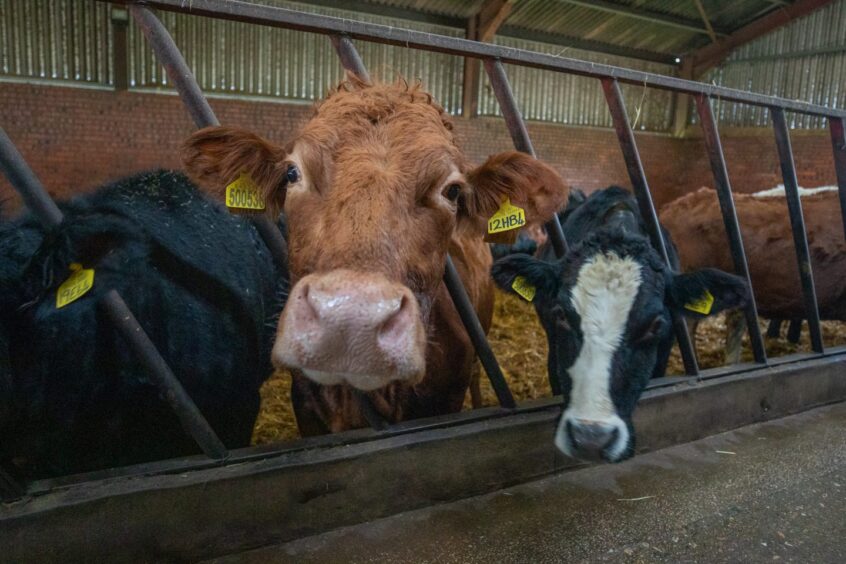
I don’t know about you but I love a good steak. Preferably a medium rare, one inch thick ribeye sliced and served with my version of the sauce created by the famous French “L’Entrecôte” restaurant chain I ate in regularly when I lived and worked in France a few decades ago and, a good size side of French fries plus, of course, a glass or two of a decent vin rouge.
However, according to a report issued by the Parliamentary Office of Science and Technology in 2019 agriculture is in fact the “fourth highest greenhouse gas emitting sector globally”, and of course, meat production is seen as a problem when it comes to climate change due primarily to the high level of methane emissions cattle produce.
It would seem to me then that whilst there has been some success in reducing bovine (posh word for cow) emissions then greater progress might be achieved by decarbonising the farming process itself.
Farms are big energy users. From tractors and other machinery such as combine harvesters to milking machines, equipment for cheese making, hay driers and so on their appetite for energy is pretty voracious.
Even new vegetable farming techniques like vertical farming and new lighting systems such as those being produced by Light Science Technologies are all increasing the amount of energy agriculture uses.
Large-scale conventional greenhouses are also big consumers of energy with both high heat and lighting demands. That’s what consumer demand for all-year-round vegetable availability leads to.
As with many other commercial activities, agriculture requires the security of energy supply, particularly during the winter months.
As a consequence, a lot of the work on the decarbonisation of farming has been related to the use of green hydrogen because it can be stored relatively simply long term and in large quantities.
For example, the German tractor manufacturer Fendt, Tafe in India and JCB in England have all developed hydrogen power trains for tractors.
Fendt is using fuel cells whereas Tafe and JCB are using internal combustion engines. Similar solutions could be used for most if not all farm vehicles even including quad bikes some of which are already available as battery-powered.
It’s good to see then that Scotland’s principal agricultural research centre, the James Hutton Institute in Aberdeen, has cottoned onto this and is in the process of establishing a demonstration project called HydroGlen at the institute’s Glensaugh research farm near Fettercairn in Aberdeenshire.
This project aims to show the feasibility of making farms fully energy self-sufficient by using solar and wind energy to produce green hydrogen that can be stored long-term and used not just for agricultural vehicles but to heat and power farm buildings and other applications.
Now at the procurement stage, it includes installing a single 500-800 kW wind turbine, a 0.25 ha solar array at ground level and/or roof level and a green hydrogen production facility. The project is being funded by the Scottish Government.
It’s my view that this should be a straightforward project because all the components needed to complete it already exist so it’s really more of a system integration exercise than anything else.
It is however important to demonstrate that hydrogen does actually do what it says on the tin and the concept of off grid farming with improved energy security and resilience is well worth proving. Similar projects are happening in Europe.
Most components will need to be imported so I’d like to hope that such a project will stimulate interest in the design, development and manufacturing of other hydrogen fuelled agricultural products. But I’m probably being overly optimistic on that.
There are of course other forms of energy available from agriculture not least of which is biogas made using animal manure and a process called anaerobic digestion.
The biogas is a drop-in replacement for natural gas which if liquified could replace LPG which is used extensively in Scotland for domestic heat and cooking.
I personally have an LPG hob because of the risk of power cuts, and we just prefer using gas as indeed I would bet most restaurants do.
The residue left over from anaerobic digestion is of course recycled as a rich organic fertiliser so for the farmer this is a win-win outcome which makes me wonder why there aren’t more anaerobic digestion plants around but I’m assuming that this is the usual problem of the lack of investment capital.
That said, I would love to investigate the possibility of using farm-produced green hydrogen as the energy source for an anaerobic digestion and integrated biogas liquidation plant because
I believe that the agricultural industry could contribute a great deal more to achieving net zero than we think. Meanwhile, I’d better turn that steak over.
Recommended for you
